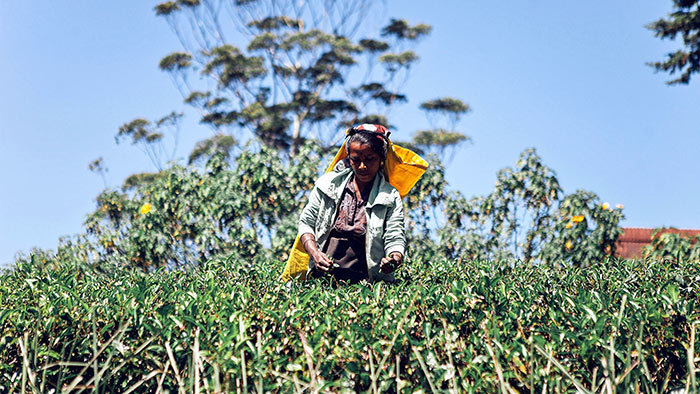India gets to tap Iranian orthodox tea market ceded by Sri Lanka

(Photo: Pexels)
Sri Lanka has seen a major dip in tea production and lost a chunk of Iranian market for orthodox tea. Around 20% of India’s total tea exports go to Iran and the present decline in Sri Lankan orthodox production may enable India to increase its market share of orthodox tea in Iran.
India produces an average of 120 million kg of orthodox tea per annum and Sri Lanka an average 300 million kg per annum, predominantly orthodox. There has been a drop of above 15% tea production in Sri Lanka and it has to be seen whether Indian quantum is capable of filling in the gap of orthodox tea supplies in the global market, PK Bhattacharya, president, Tea Association of India, said.
Tea exports from India to Iran jumped twofold in January this year to 2.7 million kg from 0.59 million kg during the corresponding month last year. Price realisation this year was also higher at 282.63 a kg against 271.34 a kg released in January last year, according to tea board data.
Sri Lanka exports over 95% of its total annual production accounting for about 50% of the global trade of orthodox tea. Sri Lankan orthodox tea in many cases fetches a higher price than Assam orthodox and it is a much liked variety in Russia and CIS countries. But there are long power cuts going on in Sri Lanka – for about 14-15 hours a day and disruption in processing leads to quality deterioration. Moreover, there was lesser rainfall for which over all tea production in Sri Lanka has witnessed a 15-18% drop, Bhattacharya said.
“In February 2022, their production of tea declined significantly by 20%. On an average the monthly production is seen at 20-23 mkg and in February it was seen lower at around 18.2 mkg,” Sanjith Nair, secretary United Planters’ Association of Southern India (UPASI), the apex body of planters, said.Sri Lanka caters to the world demand for orthodox tea to the extent of 43-47%. South India being of similar elevation to Lanka has the scope for replacing it in the international market. But government support was required to increase the production of orthodox tea in India, which was earlier incentivised but at present removed, Nair said.
According to Bidyananda Barkatkoty , advisor, North East Tea Associatiion, Russia and other CIS markets are highly uncertain at present. So, for Sri Lanka whose tea economy is intensely export-oriented the shortfall may match with the demand fall. But Iran would be the matter where quality orthodox tea is always in high demand.
The fall in quality of tea may be detrimental for Sri Lanka in the Iranian market and that’s where there is an opportunity for India to focus on increasing its market share in Iran, which down the line would increase India’s total global market share. “But other’s loss is our gain and is not what the tea industry wants. Gains should come in competitive manner,” Barkatkoty said.
India’s total tea exports in January this year have shrunk a tad to 17.21 mkg from 17.22 mkg during January last year. But realisation has drastically fallen from Rs. 263.62 a kg to Rs. 253.18, which hints to major quality compromise. Exports to Russia and other CIS countries in January this year was 4.08 mkg with a price realisation of around Rs. 164.51 a kg against 5.16 mkg of export in January last year realising a price of Rs. 202.98 a kg.
(Financial Express)

Latest Headlines in Sri Lanka
- Court of Appeal to rule on IGP Tennakoon’s arrest warrant on March 17, 2025 March 12, 2025
- Military deserter arrested for sexually assaulting doctor at Anuradhapura Hospital March 12, 2025
- Tuition teacher under investigation for student assault ignores NCPA summons March 12, 2025
- Sri Lanka maintains stance on Adani, open to investment March 12, 2025
- Doctors strike over delay in arrest of sexual assault suspect March 12, 2025


